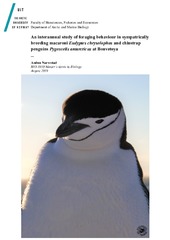A new genus of horse from Pleistocene North America
Permanent link
https://hdl.handle.net/10037/12256Date
2017-11-28Type
Journal articleTidsskriftartikkel
Peer reviewed
Author
Heintzman, Peter D.; Zazula, Grant D.; MacPhee, Ross D. E.; Scott, Eric; Cahill, James A.; McHorse, Brianna K.; Kapp, Joshua D.; Stiller, Mathias; Wooller, Matthew J.; Orlando, Ludovic; Southon, John R.; Froese, Duane G.; Shapiro, BethAbstract
The extinct ‘New World stilt-legged’, or NWSL, equids constitute a perplexing group of Pleistocene horses endemic to North America. Their slender distal limb bones resemble those of Asiatic asses, such as the Persian onager. Previous palaeogenetic studies, however, have suggested a closer relationship to caballine horses than to Asiatic asses. Here, we report complete mitochondrial and partial nuclear genomes from NWSL equids from across their geographic range. Although multiple NWSL equid species have been named, our palaeogenomic and morphometric analyses support the idea that there was only a single species of middle to late Pleistocene NWSL equid, and demonstrate that it falls outside of crown group Equus. We therefore propose a new genus, Haringtonhippus, for the sole species H. francisci. Our combined genomic and phenomic approach to resolving the systematics of extinct megafauna will allow for an improved understanding of the full extent of the terminal Pleistocene extinction event.
Description
Publisher
eLife Sciences PublicationsCitation
Heintzman, P. D., Zazula, G. D., MacPhee, R. D. E., Scott, E., Cahill, J. A., McHorse, B. K., Kapp, J. D. … Shapiro, B. (2017). A new genus of horse from Pleistocene North America. eLIFE, 6. https://doi.org/10.7554/eLife.29944Metadata
Show full item recordCollections
Related items
Showing items related by title, author, creator and subject.
-
An interannual study of foraging behaviour in sympatrically breeding macaroni Eudyptes chrysolophus and chinstrap penguins Pygoscelis antarcticus at Bouvetøya
Narvestad, Audun (Master thesis; Mastergradsoppgave, 2019-08-15)Species are likely to segregate their ecological niches to minimize competition for resources, but for centrally foraging predators that breed on sub-Antarctic islands in the Southern Ocean the possibility of niche segregation may be minimal. This study is the first to examine the spatial and trophic aspects of the foraging niche of sympatrically breeding macaroni and chinstrap penguins at the ... -
Pseudocalanus (Copepoda: Calanoida) of the North Atlantic Ocean : species composition, environmental preferences and phylogeography
Aarbakke, Ole Nicolai S (Doctoral thesis; Doktorgradsavhandling, 2013-06-25)The seven species of the genus Pseudocalanus (Copepoda: Calanoida) are difficult to identify because of very small interspecific, and comparatively large intraspecific, divergence of morphologic and morphometric traits. Thus, despite the fact that Pseudocalanus spp. are among the most abundant metazoans in the world, our knowledge of them at the species level is limited. The main objective of this ... -
Bearded seal vocalisations across seasons and habitat types in Svalbard (Norway)
Martínez Llobet, Samuel (Master thesis; Mastergradsoppgave, 2019-08-15)Male bearded seals use vocal displays to attract females and compete with other males during the mating period, making it possible to monitor breeding populations using passive acoustic monitoring (PAM). This study analysed year-round acoustic data from underwater recorders at three sites with different environmental conditions in Svalbard (Norway). Male bearded seals vocalised for an extended ...


 English
English norsk
norsk


